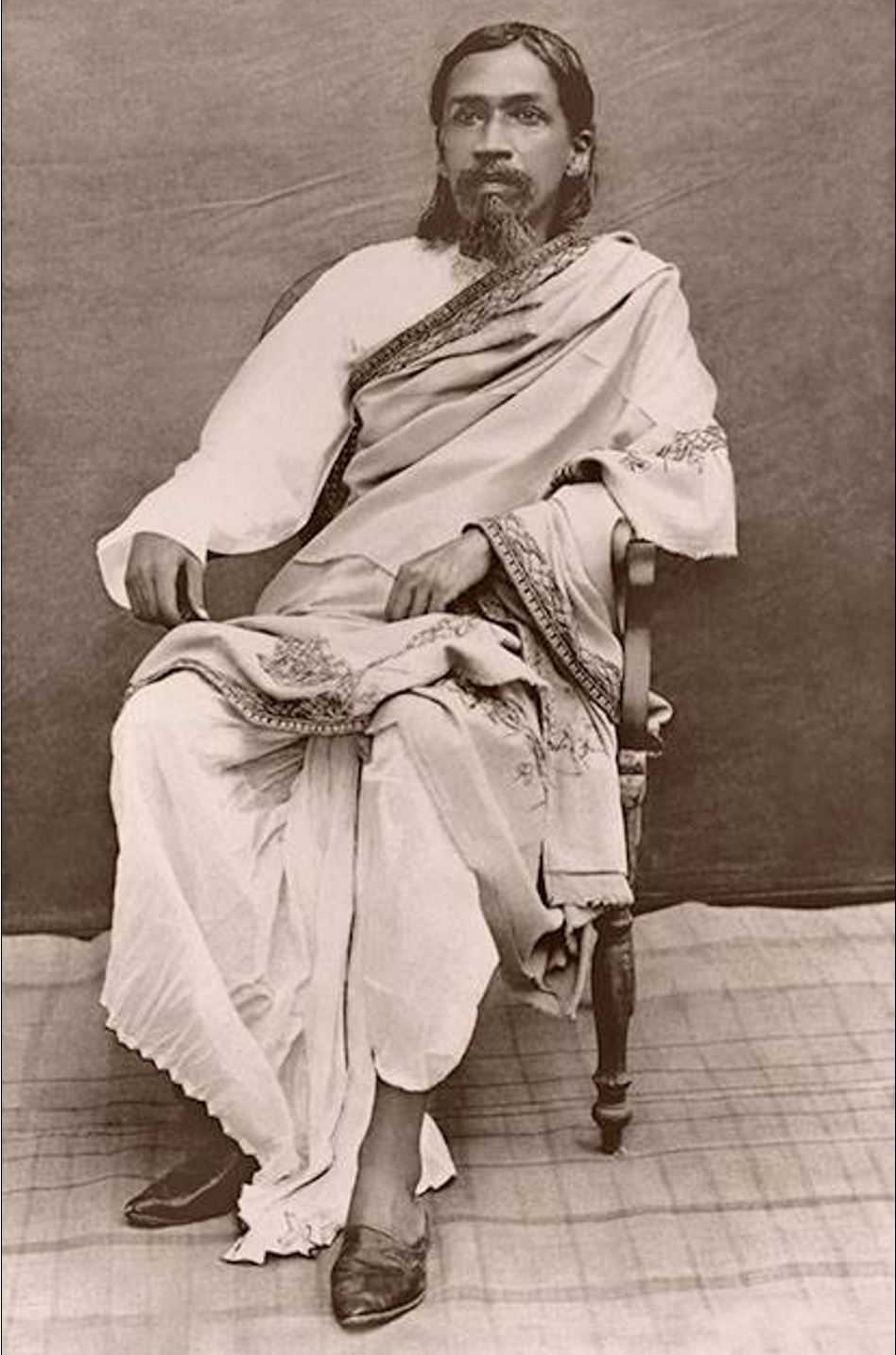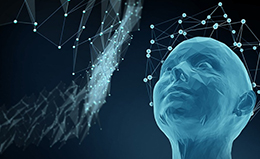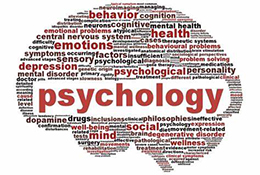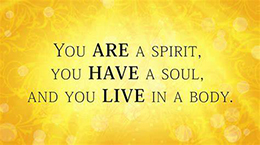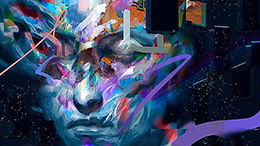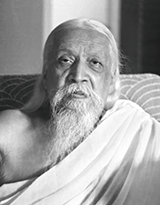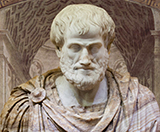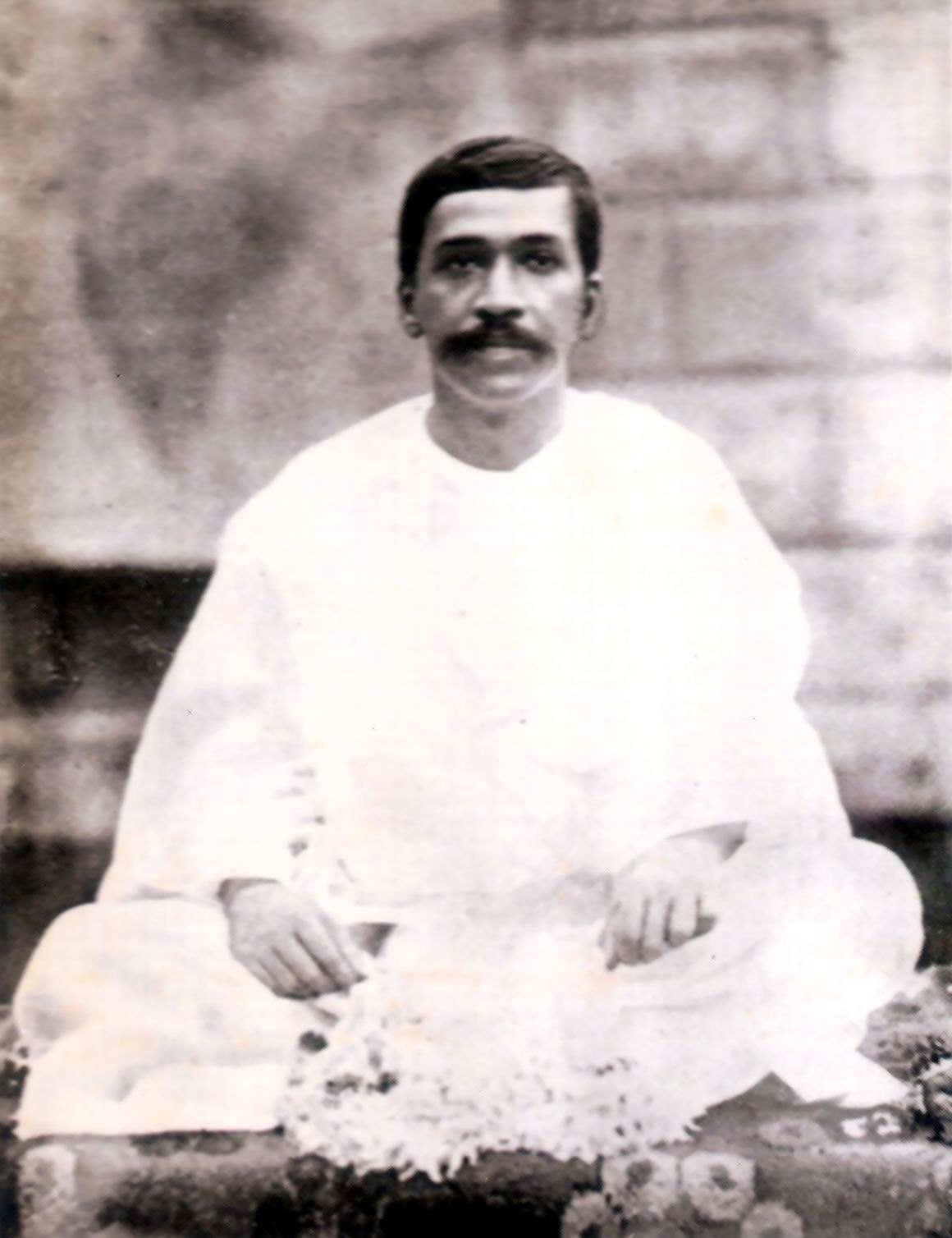Psychology
Sri Aurobindo’s Prevision of a Greater Psychology
Abstract
Psychology is the study of consciousness and its operations in Nature. Consciousness is the creative force of existence that is the inmost reality of everything (the poise of the Self or soul) and the Conscious-Force that builds the worlds. The soul-status shifts when one goes from the lower Nature to the Higher Nature, free from the ego. Psychology may begin as a natural science but deals with the supraphysical and ends with a metaphysical enquiry.
William James’seminal work, The Principles of Psychology, appeared in 1890. He defined psychology as the description and explanation of states of consciousness in human beings. He had, of course, visualised psychology as a “natural science”. When, years later, the transpersonal movement reinstated consciousness in psychology in the 1960s, it treated psychology as a “human science (1)”. A human science, in contrast to a natural science, had its own unique and innovative techniques and fields, which could be tested and verified by an aspirant who had the faith and courage to undertake a disciplined voyage of self-discovery. Hence this approach was to be a ‘self-knowledge psychology’ characterised by an experiential “inner empiricism (2)”.
It is against this background that Robert Ornstein in 1973 had defined psychology as primarily the science of consciousness and reiterated that it was time to return to the primary source of psychology — the analysis of consciousness (3).
Echoing the same thoughts and in consonance with the meticulously recorded notes of his experiential journey (now available as Record of Yoga) which made him the pioneer of ‘human science’, Sri Aurobindo, in an incomplete manuscript written in 1927, gave a landmark definition of psychology that can be regarded as the forerunner of the transpersonal approach:
“Psychology is the science of consciousness and its status and operations in Nature and, if that can be glimpsed or experienced, its status and operations beyond what is known as Nature (4)”.
This approach was a modification of a more simple definition he had penned during 1917-18, “Psychology is the knowledge of consciousness and its operations (5).”
There are two key-terms in the 1927 definition: `Consciousness' and `Nature’, which need to be understood in the context of Sri Aurobindo's thought:
(a) Consciousness can be defined as a self-aware, self-manifesting, creative force of existence that is both the inmost reality of everything (perceived in this poise as `Self' in spirituality) and the Conscious-Force (studied as `Energy' by science) that builds and organises the worlds of matter, life and mind and therefore antedates the brain in evolution, using it as an instrument for expression. It extends beyond the mind through the subconscious into an Inconscience, full of involved potentialities while it can also rise to a Superconscience, full of dynamic possibilities; it is therefore simultaneously integral and pluri-dimensional.
(b) Nature (known as Prakṛti), conceived as “power of the spirit or rather…. spirit as power (6)” refers to “the outer or executive side of the Shakti or Conscious-Force which forms and moves the worlds. This outer side appears here to be mechanical, a play of forces… Behind it is the living Consciousness and Force of the Divine, the divine Shakti (7).”
It can be said of Nature, “By this power the spirit creates all things in itself, hides and discovers all itself in the form and behind the veil of its manifestation (8).”
Thus, Nature is not as mechanical and unintelligent as it appears in its external poise, but organised by an Energy or Force which arranges things according to their inner truth. As Universal Nature has been projected by the Universal Spirit to offer all material for the manifestation, “… everything in Nature corresponds to something in the Universal Soul. For instance the vital corresponds to the divine Tapas (9).” [Tapas symbolises the combustive power of the Divine Śakti or Consciousness-Force.]
Outwardly however, this Nature presents as a facade of limitation and division, hence it is not integral. There is a higher aspect of Nature which is referred in the definition of psychology by Sri Aurobindo as, “beyond what is known as Nature”. The very fact that Sri Aurobindo describes that there is something which is “beyond what is known as nature” shows that there is a Higher Nature or Supernature as well as a lower Nature. The Supernature refers to the Higher Reality, the Consciousness-Force aspect of Sachchidananda, which upholds the lower nature. It acts by unification and transcendence of limitations and is integral in outlook. The human being in ignorance is subject to the lower Nature but by spiritual evolution of consciousness can ascend to the Higher Nature or Supernature. Sri Aurobindo opined that an integral knowledge, “… has to recognise the double nature of this manifestation, — for there is the higher nature of Sachchidananda in which He (Sachchidananda) is found and the lower nature of mind, life and body in which He is veiled, — and to reconcile and unite the two in the oneness of the illumined realisation. We have not to leave them separate so that we live a sort of double life, spiritual within or above, mental and material in our active and earthly living; we have to re-view and remould the lower living in the light, force and joy of the higher reality (10).”
The lower Nature exists in the Ignorance where mind, life and Matter are linked with the ego and hence separated in consciousness from the Divine. It is in its matrix that modern psychology constructs the structure of the personality and in yoga psychology, it is the substratum that holds in its bosom the play of the forces representing inertia (tamas) , dynamism (rajas) and balance (sattva), which by their interplay uphold the surface personality. The Higher Nature, in the classical spiritual parlance, is accessible through ego-transcendence. Actually, it is through ego-transcendence that the status of the soul (the self) progressively shifts and with each new soul-status, there is a corresponding shift in the status of Nature or Prakriti. Thus Nature itself is a dynamic phenomenon defying fixed determinations. As the soul-status shifts to a higher and higher level of the being, Nature itself is elevated to the poise of the Higher Nature with ”… a superior working, a wider consciousness, a vaster force and an intenser or larger range and joy of existence (11).”
Soul and Nature
The shifting stances of the soul-status indicates the different poises of the soul or self that preside over Nature in a complex, rich and variegated manifestation. There is:
a. its poise of pure eternity that is superior to and governing its manifestations;
b. the poise of self-supporting universality that develops the power of becoming, of its existence and thus manifests the “infinite in the finite”; and
c. the poise of exclusive individuality, which pursues a particular course of the phenomenon of becoming, to appear as “mutably finite in the infinite (12)”.
”This power of the soul over its nature is of the utmost importance in the Yoga of self-perfection; if it did not exist, we could never get by conscious endeavour and aspiration out of the fixed groove of our present imperfect human being; if any greater perfection were intended, we should have to wait for Nature to effect it in her own slow or swift process of evolution. In the lower forms of being the soul accepts this complete subjection to Nature, but as it rises higher in the scale, it awakes to a sense of something in itself which can command Nature; but it is only when it arrives at self-knowledge that this free will and control becomes a complete reality (14).”
Indian spirituality has always considered that when the soul-status shifts to the higher Nature, it can be poised in different ways in which Sachchidananda manifests, viz. in the principle of infinite unity of self-existence; in the principle of infinite conscious energy or in the principle of infinite self-existent delight. “In these three poises the consciousness of unity dominates; the soul lives in its awareness of eternity, universality, unity, and whatever diversity there is, is not separative, but only a multitudinous aspect of oneness (15).“ Sri Aurobindo has enlarged further the scope of the higher ranges of Nature to the poise where Sachchidananda manifests the creative power of the Supermind, “… a luminous self-determining knowledge, will and action… (16)”, coeval with perfect delight so as to be ”…always aware of the Divine and free from Ignorance and its consequences (17).”
Thus, a poise in any of the three aspects of Sachchidananda can reflect oneness, though one or other aspect predominates but with the manifestation of the Supermind, the Sachchidananda experience becomes not only unitary but simultaneously integral. A poise in the higher Nature, that has transcended the ego and even experienced the Sachchidananda, cannot fully conquer the forces of Ignorance and Inconscience unless the powers of the Supermind are manifested. The Supermind itself has higher and lower ranges; in its higher gnosis, ”… unity is the basis, but it takes its joy in diversity; in lower fact of supermind diversity is the basis, but it refers back always to a conscious unity and it takes joy in unity (18).” Sri Aurobindo reminded, “These ranges of consciousness are beyond our present level; they are superconscious to our normal mentality. That belongs to a lower hemisphere of being (19).”
The Truth of the unitary Sachchidananda, at the Higher Nature where Existence, Consciousness-Force and Bliss form an indivisible trio, gets projected in the divisive principles of mind, life-energy and matter at the lower Nature. This cleavage between the Higher Nature and lower Nature and this divisibility between the principles of mind, life-energy and matter in the lower Nature is necessary so that each individual principle develops its maximum potential at the expense of others, ensuring the variety and richness of creation. However, it should be remembered that each principle has the potentiality to develop because the universal soul or spirit, “… dwells in all these planes in a certain simultaneity and builds upon each of these principles a world or series of worlds with its beings who live in the nature of that principle (20).”
Moreover, just as annular rings are present in a tree-trunk revealing the whole history of the tree, similarly, all the planes of the Higher Nature and lower Nature are present in the consciousness of each individual human being, giving him or her, a chance to shift from the ignorance of divisibility to the knowledge of unity. “Man, the microcosm, has all these planes in his own being, ranged from his subconscient to his superconscient existence. By a developing power of Yoga he can become aware of these concealed worlds hidden from his physical, materialised mind and senses which know only the material world, and then he becomes aware that his material existence is not a thing apart and self-existent, as the material universe in which he lives is also not a thing apart and self-existent, but is in constant relation to the higher planes and acted on by their powers and beings. He can open up and increase the action of these higher planes in himself…. But his most important capacity is that of developing the powers of the higher principles in himself, a greater power of life, a pure light of mind, the illumination of supermind, the infinite being, consciousness and delight of spirit…. he has to begin from the law of his present imperfection, to take full account of it and see how it can be converted to the law of a possible perfection…. Mind in him, though he is an embodied mental being, has to bear the control of the body and the physical life and can only, by some more or less considerable effort of energy and concentration, consciously control life and body. It is only by increasing that control that he can move towards perfection, — and it is only by developing soul-power that he can reach it. Nature-power in him has to become more and more completely a conscious act of soul, a conscious expression of all the will and knowledge of spirit (21).”
It can thus be surmised that Sri Aurobindo visualised a consciousness-based integral psychological perspective with a whole-person orientation from the beginning. The whole-person in the Aurobindonian ambit includes the outer being and the inner being supported by the soul-principle and its field of action extends from the embodied consciousness to the transcendental consciousness, as well as expanding into the cosmic consciousness. The soul-principle itself is a projection of the Spirit in its individual poise that is identified simultaneously with the Spirit in the Transcendental and Universal poises. It is significant that the integral psychological perspective of contemporary times includes personal, interpersonal and transpersonal dimensions — not just the transpersonal. Transpersonal psychology itself has outgrown its initial poise that was context specific to other Western schools of psychology and is moving towards the whole person by surpassing the transpersonal/trans-egoic aspect of the self.
Psychology — a complex of science and metaphysics
Metaphysics in the Aristotelian sense concerned itself with the fundamental nature of existence. Today that terrain is being claimed by fundamental physics, cognitive sciences and even evolutionary biology. The problem is that if science starts from the premise that physical matter is the only reality, its conclusions cannot be justified empirically if the scientific temper is to be impartial. Moreover, the scientific position affirms itself by denying whatever it cannot explain. Such an ‘a priori denial’ would be antithetical to the very spirit of knowledge. Modern physics shows that sub-atomic particles like leptons and quarks cannot be subdivided any further because they lapse into formlessness. It is as if forms lapse into something like the Brahman of the Upaniṣads, which is without form though containing all forms and permeating all forms. The ‘bottoms up’ approach to build a model of reality with ultimate building-blocks appears to be no longer tenable. Ulrich Mohrhoff writes, “The right question to ask is, how does Brahman manifest the world — or manifest itself as the world (22)?”
The dilemma of modern scientific psychology is that while it has to be scientific in temper, it cannot justifiably exclude the investigation of phenomenological experience. If it has to keep its scientific character, there is no reason why it should not take cues from the fact that what quantum physics tells us about the physical world can only be appreciated on the basis of metaphysical presuppositions. Moreover, if psychology has to accommodate phenomenological experience, there is also a scope to acknowledge insights originating from deep spiritual experience. Sri Aurobindo explains that the mind cannot go on dividing existence ad infinitum, “… because behind this dividing action is the saving knowledge of the supramental which knows every whole, every atom to be only a concentration of all-force, of all-consciousness, of all-being into phenomenal forms of itself (23).”
The Supramental is the creative consciousness that not only explains atoms and molecules but also life and mind. A greater psychological paradigm has to acknowledge both the material reality and the spiritual reality. It is in the context of the complex interplay between the supramental reality and the material reality, between supermind and the mind, between the soul and Nature that Sri Aurobindo had described as early as in 1917–18:
“A complete psychology cannot be a pure natural science, but must be a compound of science and metaphysical knowledge (24).”
He continued, “A complete psychology must be a complex of the science of mind, its operations and its relations to life and body with intuitive and experimental knowledge of the nature of mind and its relations to supermind and spirit (25).”
“A physical science is a knowledge of physical processes which leads inevitably to action and use of physical processes. The scientist may only regard scientific truth and not utility; but he can find only truth of the process of things, not truth of the nature of things. His discoveries bring about inevitably a utility for action; for all truth of process is a utility for action. Even when not the aim of science, process and utility are the soul and body of physical science. Matter itself is only a utility of Spirit or Nature for physical process and action. Material energy is an instrumental dynamis which has no other sense of its operations. We get beyond to a higher sense only when [we] get beyond material to mental, psychical and spiritual energy, to mind, soul and spirit.
“Debatable it is whether if we knew the real essence of Matter and the basic, not only the apparent, relations of mind, soul and spirit to matter and material operations, we could not arrive at an infinitely more potent use of physical process and operations. But in any case these things cannot be discovered by physical science; it has its limits and cannot exceed its limits.
“Psychology may begin as a natural science, but it deals already with supraphysical and must end in a metaphysical enquiry. If one side of the process it studies and its method of enquiry is physical; the other and more important is non-physical; it is a direct observation of mental operations by mind without any regard to their physiological meaning, support, substratum or instrumentation (26).”
References
1. Giorgi A. Psychology as a Human Science. New York: Harper & Row; 1970.
2. Welwood J (ed). The Meeting of the Ways. Explorations in East/West Psychology. New York: Schocken Books; 1979, p. 224.
3. Ornstein R (ed). The Nature of Human Consciousness. San Francisco: W.H. Freeman; 1973.
4. Sri Aurobindo. The Complete Works of Sri Aurobindo, Volume 12. Pondicherry: Sri Aurobindo Ashram Trust; 1997, pp. 316-17.
5. Ibid., p. 305
6. Sri Aurobindo. Complete Works, Volume 23-24; 1999, p. 611.
7. Sri Aurobindo. Complete Works, Volume 28; 2012, p. 44.
8. Sri Aurobindo. Complete Works, Volume 23-24, p. 627.
9. (Recorded by) Purani AB. Evening Talks with Sri Aurobindo. 2nd Impression. Pondicherry: Sri Aurobindo Ashram Trust; 1995, p. 405.
10. Sri Aurobindo. Complete Works, Volume 23-24, p. 421.
11. Ibid., p. 475.
12. Ibid., p. 628.
13. Ibid.
14. Ibid.
15. Ibid., p 629.
16. Ibid.
17. Sri Aurobindo. Complete Works, Volume 28, p. 44.
18. Sri Aurobindo. Complete Works, Volume 23-24, p. 629.
19. Ibid.
20. Ibid., p. 630.
21. Ibid., pp 630-31.
22. Mohrhoff U. Spiritual Physics. In Mukhopadhyay A (ed). Essays on Sri Aurobindo. Jadavpur: Centre for Sri Aurobindo Studies, Jadavpur University; 2015, p. 73
23. Sri Aurobindo. Complete Works, Volume 21-22; 2005, p. 178.
24. Sri Aurobindo. Complete Works, Volume 12, p. 305.
25. Ibid.
26. Ibid., pp. 305-06.
Dr. Soumitra Basu, a practising psychiatrist and member of SAIIIHR, is the Director of a school of psychology, Integral Yoga Psychology. He is also one of the editors of NAMAH.
Share with us (Comments,contributions,opinions)
When reproducing this feature, please credit NAMAH,and give the byline. Please send us cuttings.

